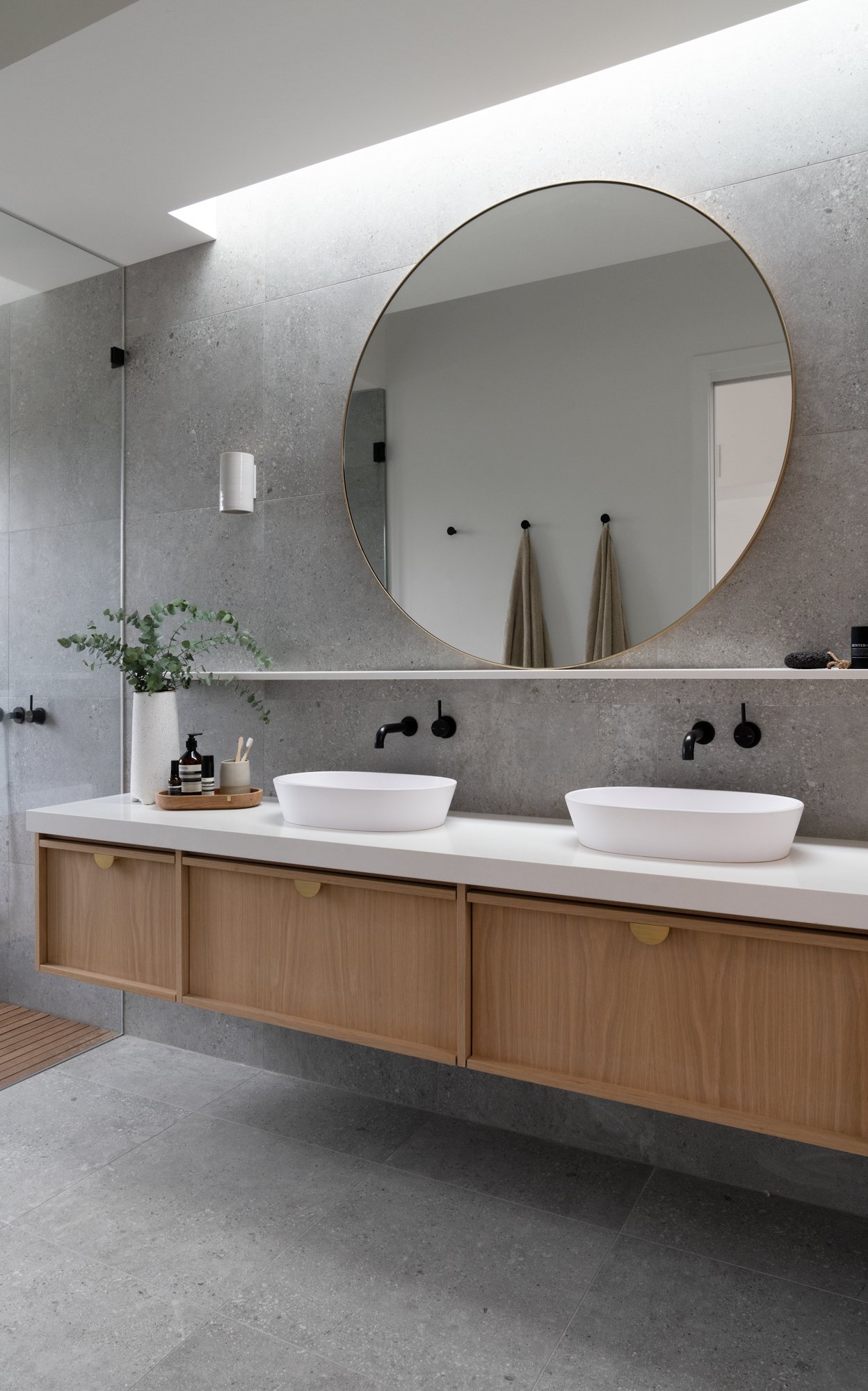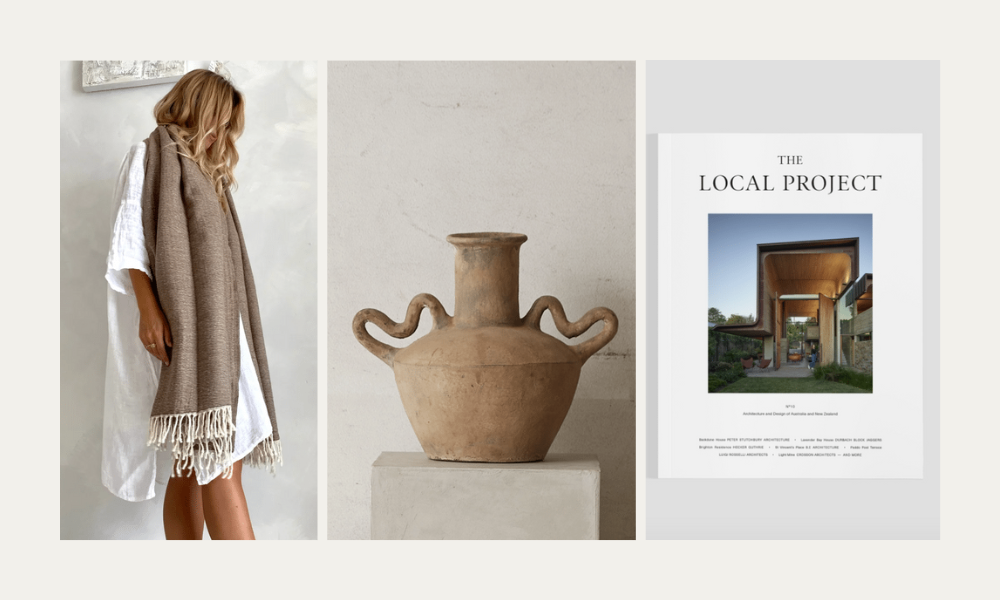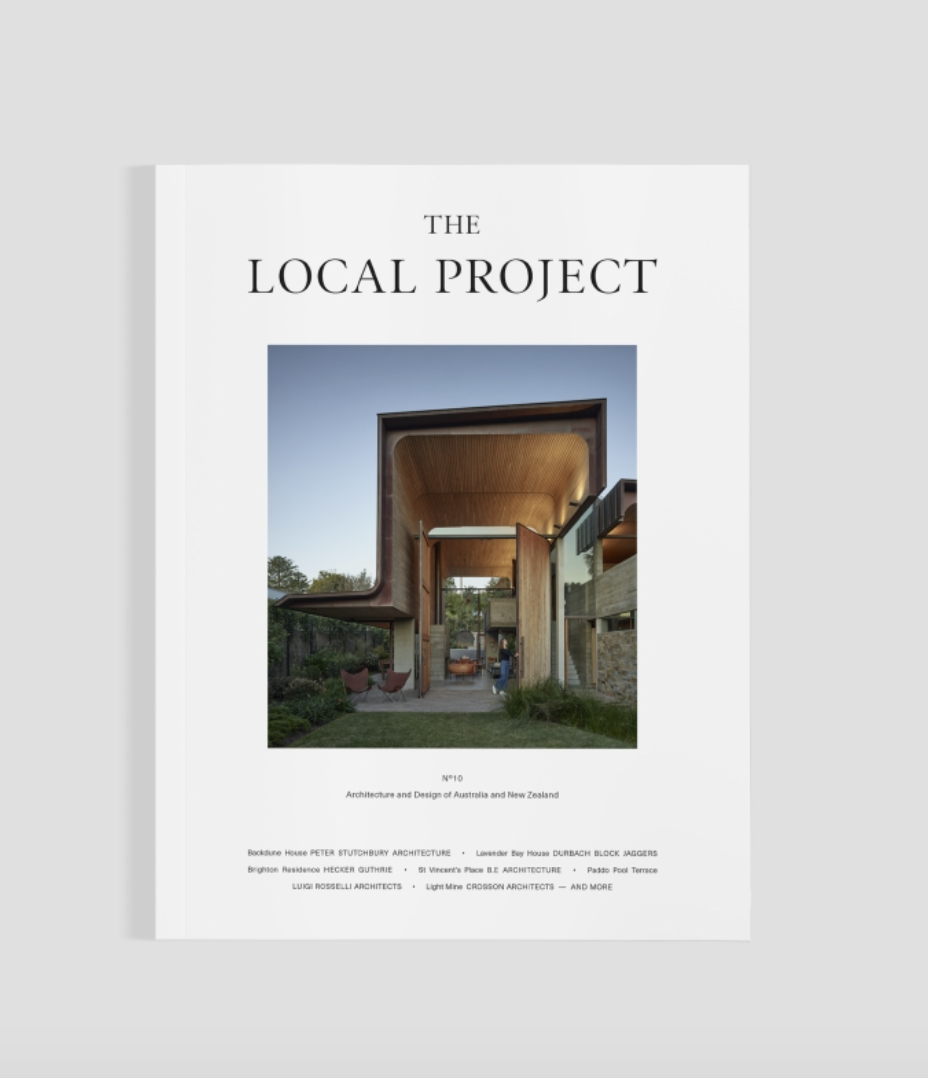Choosing Your Building Team
Our top tips for choosing the best team for your new build or renovation project.
For any build or renovation, the first crucial step is to choose your team. Who you work with will make the biggest difference in terms of the finished result of your project. Building strong relationships with your trades is key and above all it pays to have mutual respect for one another.
Project Management
Choosing your team will firstly depend on the type, size and scope of the project you are undertaking.
For a new build: you will need to hire a qualified builder who will project manage the entire build
Renovation: you can again choose a builder, or a carpenter may be applicable however the project management would then be the owners/renovators responsibility.
Project management can be a big undertaking and includes:
- Problem solving
- Hiring and managing all trades
- Project and individual trade timeline
Who handles the project management usually depends on your:
- Money/budget
- Time
- Confidence
- Project size
Finding Your Building Team
The following applies to all trades, not just builders.
1. Research builders in your area: Start by researching builders in your area. Look for builders who have experience building the type of house you want.
2. Seek out personal or industry recommendations: this is your best bet for finding someone you can trust! We cannot stress this enough, personal recommendations are key and give you such valuable insight into what it’s actually like to work with someone. You can even post on local Facebook groups for local recommendations.
3. Check their credentials: Check the builder's credentials, such as their license, insurance, and certifications. Make sure they are licensed and insured to work in your area.
4. Look at their past work: Ask to see examples of their past work and talk to their previous clients. This will give you an idea of their style and the quality of their work.
5. Get references: Ask for references from the builder and contact them to get feedback on their experience with the builder
6. Get multiple quotes: Get quotes from multiple builders so that you can compare their pricing and services. Be wary of quotes that are significantly lower than others, as this could be a sign of poor quality work or hidden costs. You want to prioritse quality trades with expertise and experience.
7. Ask about the building process: Ask the builder about their building process, including the timeline, payment schedule, and communication. Make sure you are comfortable with their process before signing a contract.
8. Trust your instincts: Trust your instincts when choosing a builder. If something doesn't feel right or you have doubts about a builder, it's best to keep looking until you find a builder you feel confident about.
Overall, choosing the right builder for your house build requires research, due diligence, and careful consideration. By following these tips, you can find a builder who will help you turn your dream home into a reality.
Your Building Team
The potential trades you may need to look at sourcing or hiring for your project:
- Builder
- Carpenter
- Cabinet Maker / Joiner
- Plumber
- Electrician
- Tiler
- Stone Installer
- Landscaper
Our Top Tips for Designing a Bathroom
We are sharing our top bathroom design tips to help you plan your dream bathroom space - be it the master, main, guest bathrooms or powder room. Bathrooms require careful planning because of the nature of plumbing which can be difficult (and expensive) to change. A bathroom is also an expensive room to renovate or build due to the multitude of requirements - plumbing, fixtures, hardware, cabinetry, regulations, waterproofing etc.
Strategic design and careful planning in the early stages will make the process so much smoother and result in a bathroom that functions well and you love!
Layout
Never have a toilet in the first line of sight. If possible, the bath or vanity should be the focal point and the first visual when you enter the space.
Allow ample space around the bath and shower for drying, changing etc. If space is limited, allow more space for the shower & bath than the toilet which can have a relatively small footprint.
You will want to have towel rails or hooks within easy reach of the shower.
Storage
Ensure there is ample storage in the main bathroom especially. Over time you will have different storage requirements i.e. bath toys, toiletries etc so it’s better to accomodate for the possibilities rather than leaving yourself short.
Head height storage at the vanity is great, the best option is a built-in shaving cabinet.
Always use drawers over cupboards for the vanity. It is neat and practical - you can see and access all your products easily. Cupboards can be a hazard, especially with young children.
You want to ensure there is a niche or shelf of some kind in the shower for soap & toiletry products you want to have easy access to.
Add extra towel storage in the main and/or guest bathrooms to make it easy to get any extras.
Lighting
We would never use downlights over the vanity. Downlights cast shadows so aren’t ideal over a vanity. Choose mood lighting, LED strip or wall lights.
If natural light is limited, we strongly suggest adding a skylight. The difference between having beautiful natural light in the space and not, will make a huge difference to the overall outcome of the bathroom.
Materials
A bathroom is a heavy duty space - meaning it’s often a high traffic space exposed to elements like water, soaps and cleaning products. Plus you are wanting to avoid mould, scum and mildew. We recommend choosing low-maintenance materials such as ceramic, porcelain and reconstituted stone. Alternatively, if you are wanting to use natural stone, ensure it’s sealed correctly by a reputable and trusted tradesman with previous experience using it in a wet space.
Always be clear on the cleaning advice for different materials (tiles, hardware, stone) used and get them in writing if possible to avoid any mistakes down the track.
It also goes without saying - make sure to select non-slip flooring for a bathroom.
Design
If there are multiple bathrooms throughout the home, we recommend carrying through elements into each bathroom to create cohesion through the home. For example , this could be tiles, overall theme, cabinetry. A great way to make the bathrooms different but still cohesive is to choose the same tiles, yet in a different colour tone. Different spaces give you an opportunity to bring new elements into each room and make it it’s own, but you want to make sure that overall, the home is synergistic.
Where to Spend & Where to Save
SPEND: We recommend spending money on good quality tapware that will stand the test of time, as they are a high use item and frustrating when they don't function correctly. Our most recommended supplier is Astra Walker.
SPEND: Allocate money to the bathroom feature - this could be a bath, basin or skylight. These are things that will take the bathroom from average to stunning so it's worth the spend.
SAVE: Large format tiles are often much more cost effective option as a stand alone product plus are significantly cheaper to lay by a tiler.
SAVE: For mood lighting there are some great affordable options out there. LED strip lighting can also be a great low-cost option.
SAVE: Use pre-made mirrors and shaving cabinets rather than custom. Design your bathroom space around those pre-made sizes initially to save the much higher cost of custom.
If you are interested in our design services and have a potential project that you need help with, please get in touch.
Christmas Gift Guide | For the Interior Lover
We have made shopping easy for the interior design lover in your life! Shop our curated selection of products they will love.
Timber Table Lamp
Moku Serving Board
Bordeaux Candles | Deluxe Large
Local Project | Yearly Subscription
McMullin & Co - Komang Vessel | Mottle
Luna Light Shade
Byron Bay Lifestyle - Lightweight Wool Throw | Smoke
Disclaimer: This post contains affiliate links to Etsy. If you make a purchase from these links, Studio Haus Co may earn an affiliate commission. Learn more here.
Christmas Decor Shopping Guide
‘Tis the season. Our Christmas Decor Shopping Guide for 2022 featuring some beautiful handmade pieces in the neutral colours we love. We always love the idea of collecting decorative pieces that become family heirlooms to be adored year after year.
Disclaimer: This post contains affiliate links. If you make a purchase from these links, Studio Haus Co may earn an affiliate commission. Learn more here.
Meet the Maker: Pepin Bell
One of our favourite people to work with is Pepin Bell - a very talented and knowledgeable plasterer & renderer servicing the Northern Rivers.
Pepin has been rendering and plastering for 17 years. Growing up in the Cotwolds of England and moving to Australia in 2016. He saw a gap in the local market - someone who works closely with their clients in an honest manner to achieve their vision. That’s when he started Royal Finish Plaster. He counts himself lucky enough to work closely with some great people on some incredible projects.
We recently sat down with Pepin to share some insight into what is a niche and often misunderstood area of building and design.
How would you describe your style?
Having grown up and worked mostly in the Cotswolds of England, I’d say my style is a little different from most people in Australia. I learnt my trade using traditional materials to repair heritage and listed buildings. This installed a keen eye for detail, a high standard in my work and an appreciation for natural, raw materials having worked on places like Blenheim palace and Princess Anne’s house that are hundreds of years old.
What products do you love working with?
I’ve always loved natural materials, they serve more of a purpose than just aesthetics. Products that can help your house breathe, can regulate humidity are anti bacterial and can improve air quality.
This is why I work closely with Mineral Fox. They are advocates of quality natural materials. They have beautiful lime and gypsum plasters that are made locally in Australia and also import one of my favourite products which is a clay plaster from Clayworks, made in Devon, England.
What is something most people don’t know about plastering?
I’d probably say for me the use of the word plasterer! In the UK, if you’re a plasterer you work with all materials and renders. We apply a plaster over the whole wall and trowel it to a paint finish without the need for sanding. In Australia the term ‘plasterer’ usually just refers to setting the gyprock joins and sanding them back ready for paint.
Or maybe just the vast amount of ‘plasters’ that are available. The market is flooded with products, it’s very hard for a client to understand what they want and what they are getting. That’s why I find it so important to be transparent with your client and guide them as best you can to achieve what they want with the most suitable product. It’s down to us to educate them and not take advantage.
In your words, what is the difference between plaster and microcement?
Plaster is an umbrella term used to describe a wall/ceiling coating, this could be gypsum, lime, clay etc. and could refer to setting walls ready for paint or could be a decorative plaster that doesn’t get painted.
Microcement is a product made from cement and polymer resin. It’s designed to be applied in thin layers and because of its strength and durability it can be used it high traffic areas such as floors, countertops and showers.
What is your preferred product for wet areas?
After using many different products available that suggest they are suitable for wet areas, I will only use Mercadier Béton Ciré. This is a French product supplied by Mineral fox. It has been tried and tested for many years, unlike lots of other products being introduced to the market to keep up with the demand and trend of seamless bathroom designs.
Can you do plastered kitchen benchtops?
Yes you can, but like many other kitchen bench options there is a level of care that needs to be taken. I only use solvent based sealers when doing benches which some clients might be opposed to. These sealers are very hard wearing and when cleaned appropriately will last.
What to look for when selecting a plasterer to work with?
I think communication is the key. Find someone willing to go over different options with you. Show them what you want and hopefully they will be able to go through the best options for you. Make sure you find out what products they will use and do some research on those products. Get them to show you a sample of what they will use and if you can go check out some of their work or ask for references. Anything can look good online, it’s the little details that count.
What surfaces can you plaster over and what are no-gos?
With the right preparation most surfaces can have some sort of finish applied over them. It will just depend on the surface. It’s a bit trickier with natural products as they don’t have as much flexibility and adhesive properties as some synthetic plasters and renders.
How do you care for/clean plastered surfaces or walls?
Again this depends on what the product is. If using natural products for the breathability then these won’t be sealed with a surface sealer. In which case you’d need to take more care when cleaning. A damp cloth with warm water should do the trick. Scuffs can sometimes be very lightly sanded out.
If you are looking to clean microcement then most brands offer their own cleaning products. These are usually ph neutral cleaners. Anything with high acidic or alkaline content could wear down sealers. So look for natural, ph neutral cleaning products.
What would be the price range someone should expect to pay for microcement or Venetian plaster?
Microcement can vary from around $180 to $400 a square meter. You certainly get what you pay for though. Venetian plaster can mean so many different things now, but overall for a decorative plaster finish this can range from anywhere between $80 to $300 a square metre. If you’re looking for custom one-off finishes you can potentially pay a lot more.
Contact Pepin
royalfinishplaster.com.au
Email: pepin@royalfinishplaster.com.au
Phone: 0472 980 956























